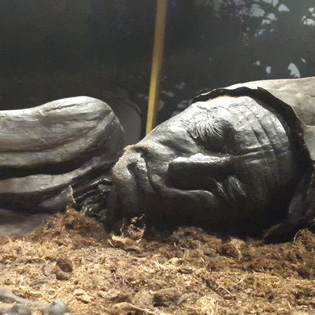
Exploring the human experience of pain in later prehistory
Henry Chapman, University of Birmingham.
0000-0001-8677-7950

This paper explores the human experience of pain in later prehistory, focusing on bog bodies displaying evidence for having been deliberately killed. Bog bodies are the remains of humans found in wetlands where, in many cases, the burial environment of peat preserves the bodies so well that soft tissue survives. Such preservation presents a much more comprehensive picture when considering how these individuals died and the precise injuries that they suffered.
There is a link between the experience of pain and consciousness and so we analysed each of the traumatic injuries observed on bog bodies in relation to the length of time that they might result in loss of consciousness. Broadly speaking, the longer the period between the infliction of the injury and loss of consciousness, the greater the experience of pain.
The results from this work highlight a curious trend. Periods of consciousness were extremely short, with all examples indicating a potential maximum of just 15 seconds. These were not victims of torture. Rather it seems that the experience of pain was deliberately limited.
For some, the modes of killing were quite elaborate, indicating that the acts were performative and designed to be observed by an audience, whether religiously or secularly motivated. As an event, perhaps the control over the duration of the pain experienced by the victim was necessary as part of such performances. The potential for the deliberate minimising of suffering raises significant questions for understanding prehistoric practice and the relationship between violence and the body.
- Chapman, H. and B.R. Gearey 2019. Towards and archaeology of pain? Assessing the evidence from later prehistoric bog bodies. Oxford Journal of Archaeology 38(2), 214-227.
- Piece in Nature News
- "Just how much pain and suffering was experienced in later prehistoric human sacrifice?" - Birmingham Perspective